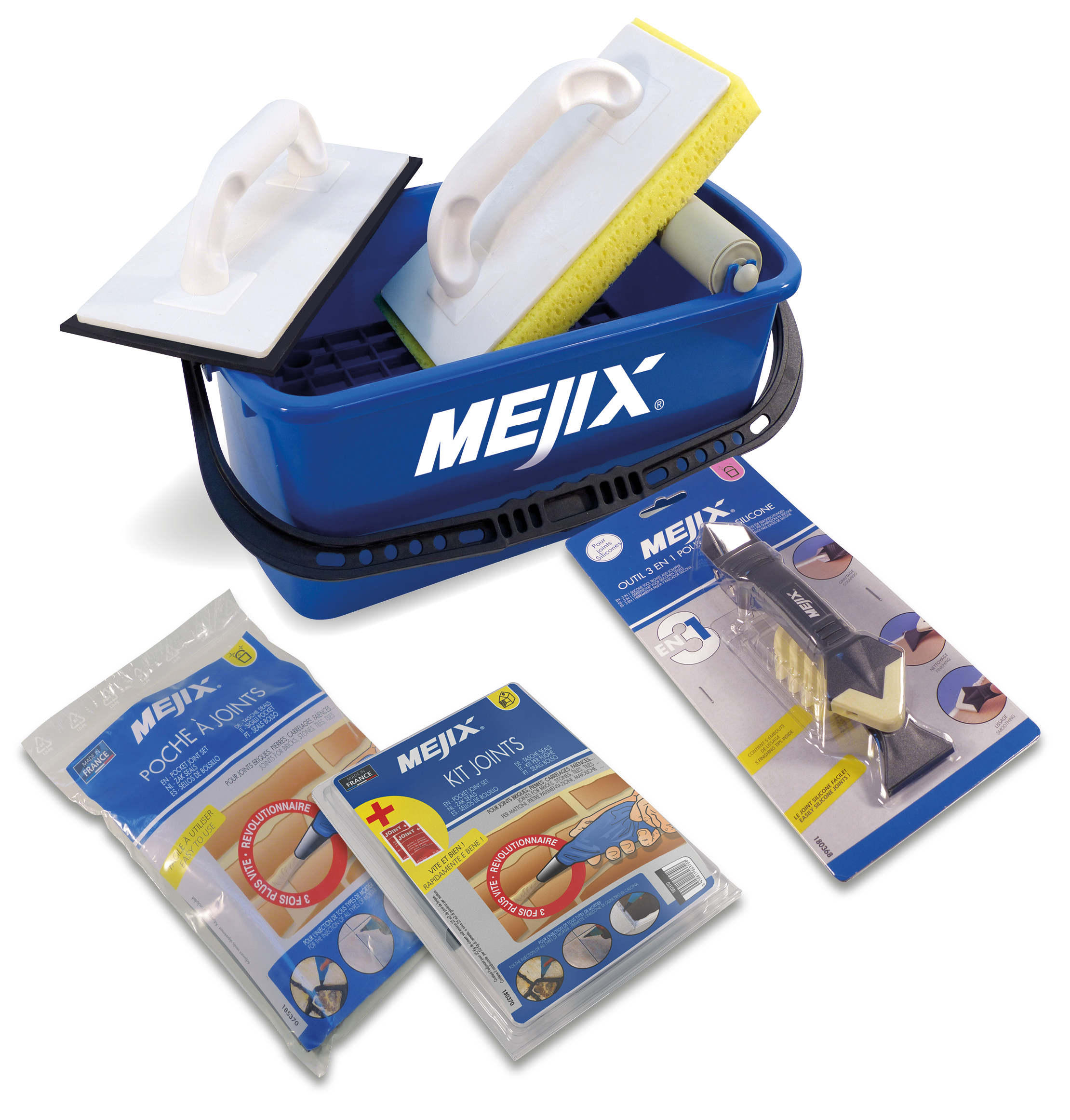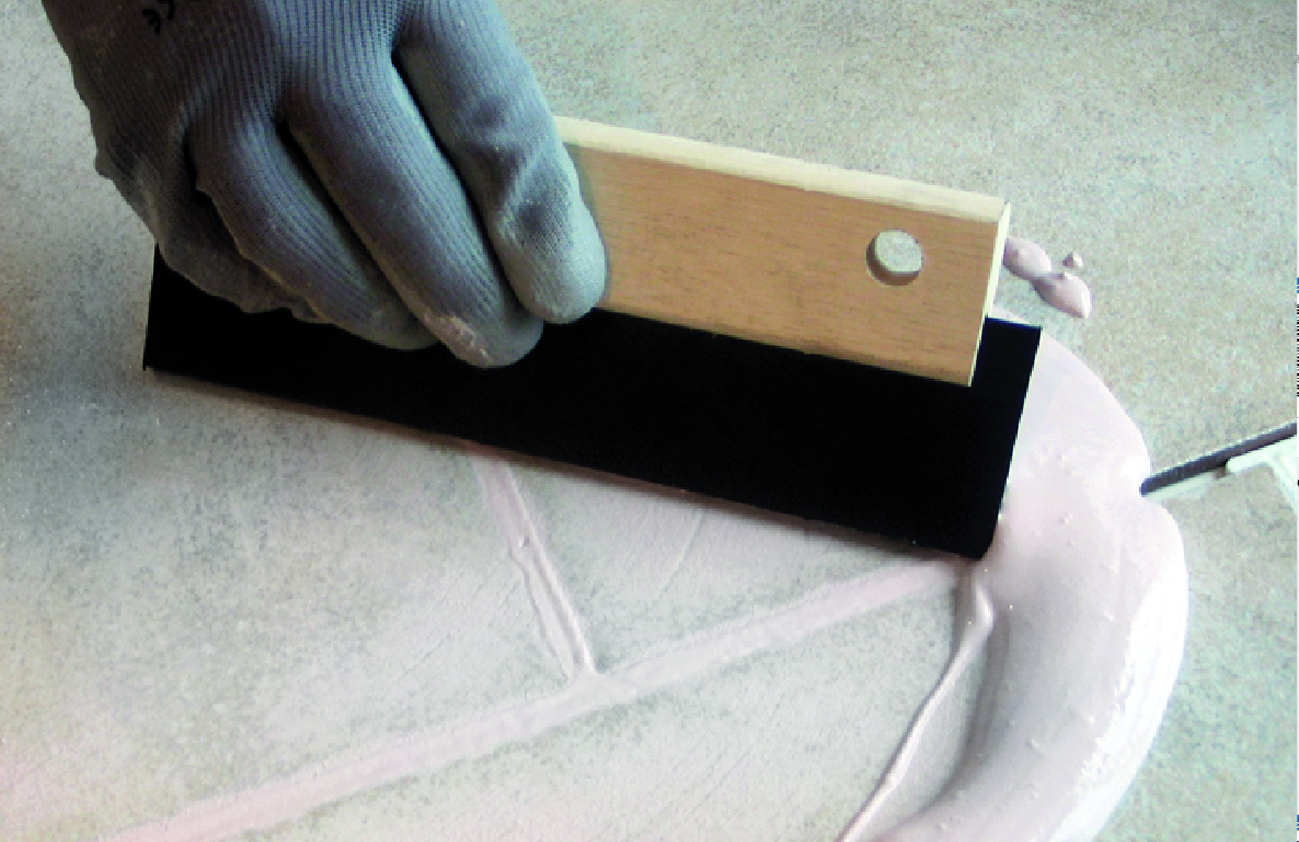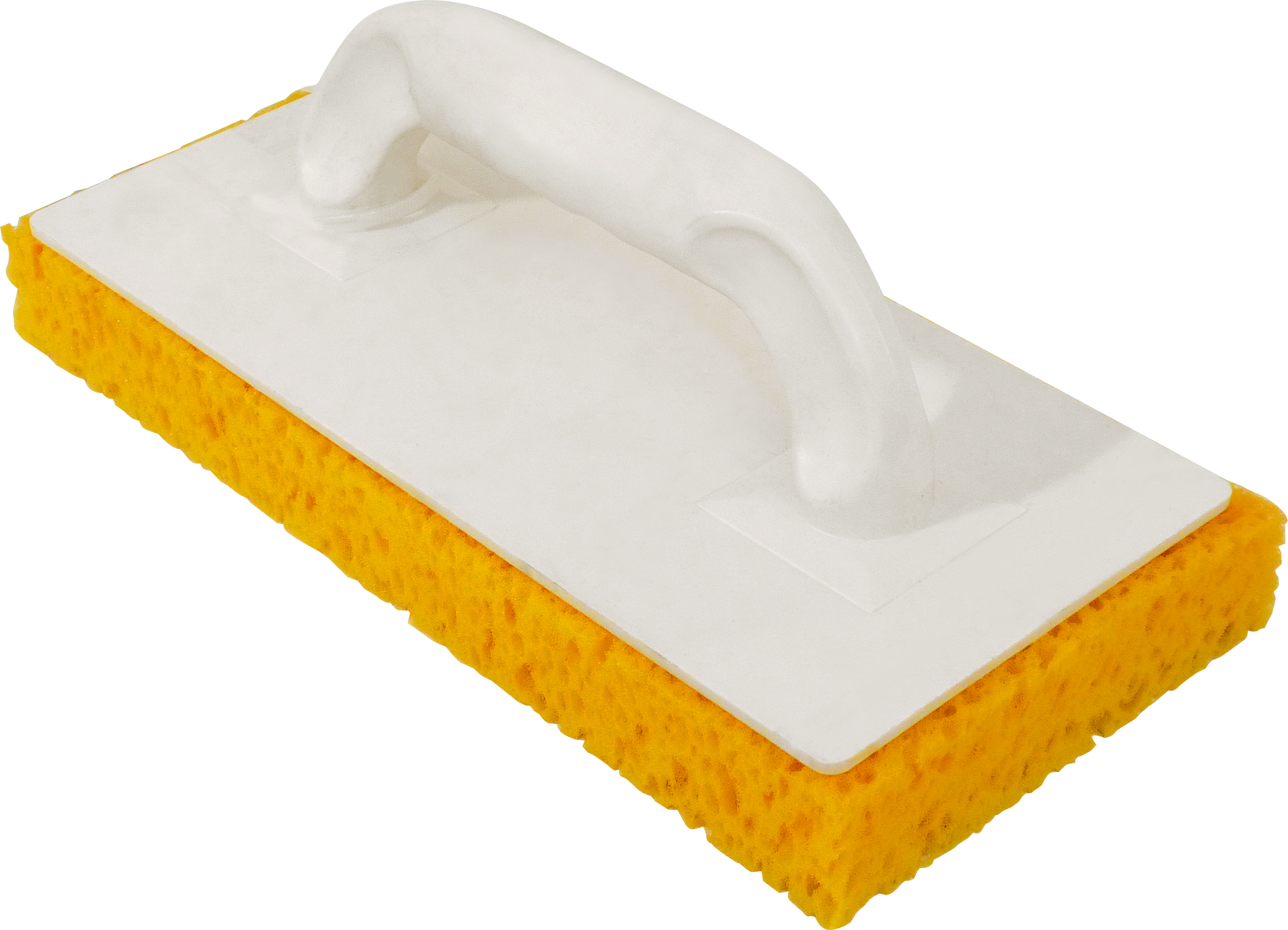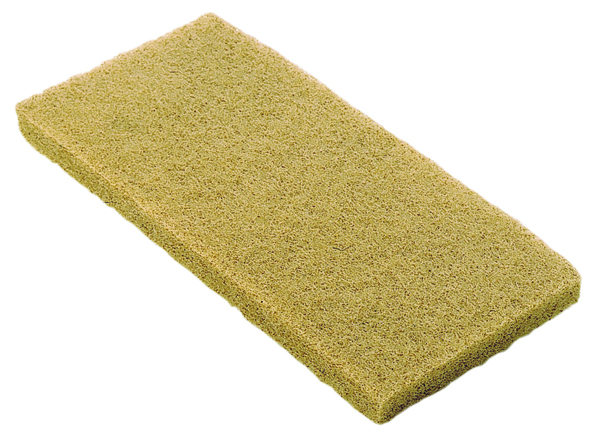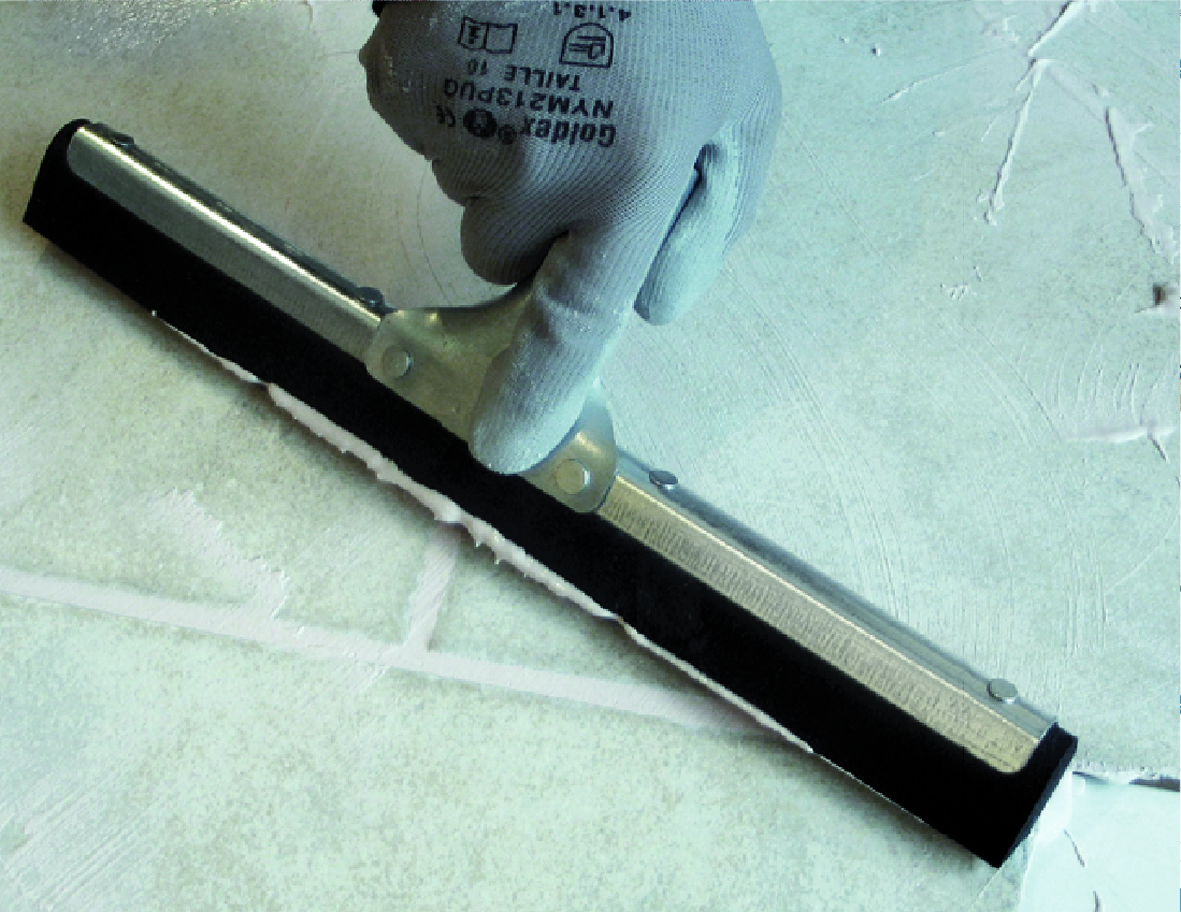Step n°6 : cleaning and maintenance of your tiles
Grouting the tiles
Once the glue has dried, the essential step is to grout the tiles. The joint ensures the perfect waterproof of your tiling.
- Apply the grout betweenthe tiles, with a spatula or a trowel.
- Use a rubber scraper to remove the joint in excess, then run your fingertip all over the leveled joint to give it a slight roundness.
- Wait a few minutes for the grout to begin to dry (complete drying takes 48 hours) to start roughing the tile cleaning with a simple damp sponge or sponge trowel, without excess water (the grout pan is best for perfect spin).
- Avoid pouring water on the tile until the joints are completely dry.
Cleaning, during and after installation:
While grouting, remember to remove the largest traces (glue, etc ...) using a sponge trowel, with a water tray fitted with a bottom grid and a wringer roller. Make wide circular movements and rinse your tool regularly.
There are also pads, to rub, to strip or to polish, with different colors according to their hardness, and able of effectively vanish the laitance. Note that the darker colors indicate harsh stripping, and the lighter ones, a lighter finish stripping.
After laying your tiles, you will notice the persistence of a white veil, left by the equalization of the slip joint and traces of mortar. This haze, also called laitance, is often resistant to cleaning, and it is not uncommon to mop the surface of the tiles three to four times so that it fades. Be patient and let it dry a little between two cleanings, to let the laitance reappear and thus better identify the areas where you will need to insist.
The excess seal can be removed with hydrochloric acid, a chemical that should be handled with care. Put on gloves, goggles and ventilate the room as much as possible.
Milt can be overcome by other products, such as white vinegar or citric acid, but whatever product you use will require rinsing with plenty of water and several passes. In all cases, manual effort will be necessary to achieve complete removal of the laitance and give your tiles its original color.
Maintenance of your tiles:
Seals: They will sometimes turn yellow faster, and this is the first thing to watch out for. Baking soda or white vinegar are effective against molds. Note that the bicarbonate and bleach mixture has a bleaching power on the joints which is not negligible. For the treatment of your joints still use baking soda spread with an old toothbrush. For the more persistent stains, use a candle brush with brass-plated steel wires. If the joint is too dark, then use a joint scraper (with carbide) to remove the damaged joint and replace it with a new one.
Over time, the tiling loses its waterproofness and becomes porous. The use of water and detergents may therefore change its appearance and resistance. The use of natural products, such as black soap, for cleaning, and linseed oil to treat tiles on the surface, can do a significant gesture for the environment and obtain immediate and long-lasting results.
Routine cleaning could also be done with a double-bladed foam scraper, on a metal frame (usually in galvanized steel). You will find different widths (from 300 to 600 mm) and they are light, anti-scratch and in general adaptable on a wooden handle for floors (incorporated socket). The "water extractor" function of these scrapers is no longer to be proven, as they are frequently used in professional environments, on terraces or concrete floors, or even during floods, because they dry very quickly. These scrapers can even effectively clean your windows.



